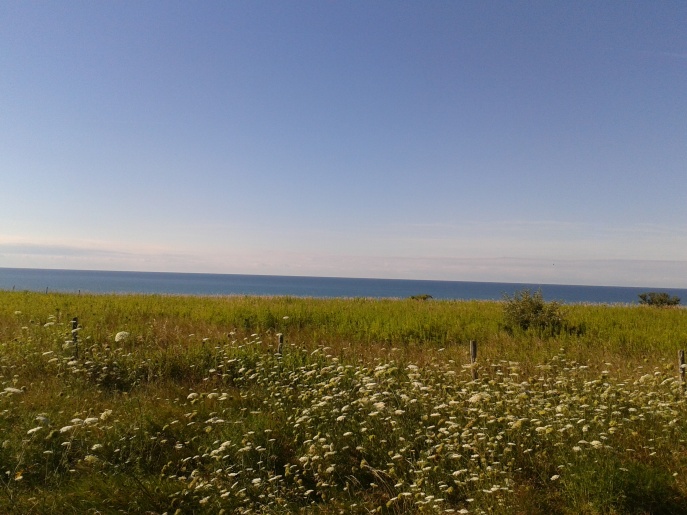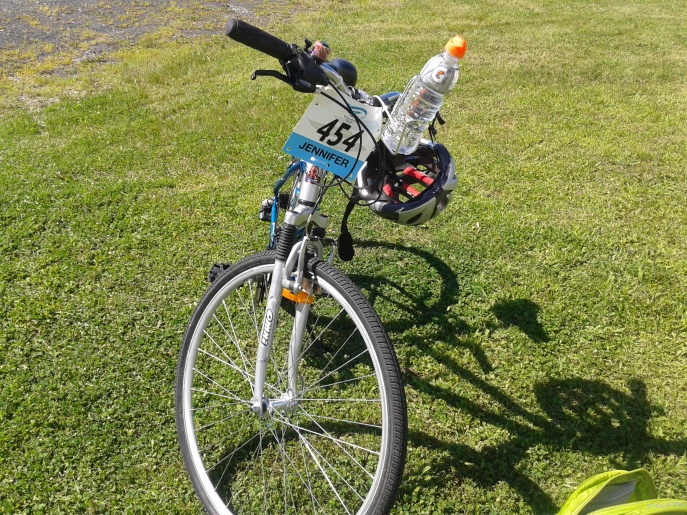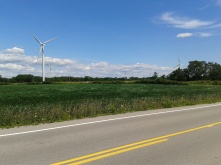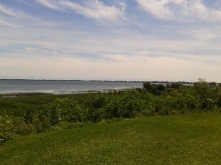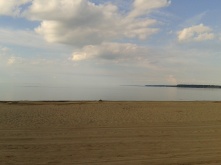Seems as if much of the excitement in my life revolves around Lake Erie these days. (Bad thing? Too much work? Good thing? Work provides adventure? Who knows?)
This past week I cycled a stretch of Lake Erie’s shoreline on the Great Waterfront Trail Adventure. From Port Stanley to Fort Erie, I clocked over 260km in the saddle! TWO HUNDRED SIXTY KILOMETERS. I have one very sore ass and sick tan-lines to prove it. And some pretty pictures.
I don’t think I have done anything quite so physically demanding in my entire life. And mentally demanding. I was very anxious about the entire event & my role in it (cycling 260km AND representing my workplace). The last time I had ridden 75km in one day, I had been positively beat… and somehow I was supposed to travel even further (95km on day one), and then wake up and do it all again (100km on day two) and again (73km on day three).
But honestly the opportunity was too good to pass up. With a discounted registration and my work encouraging me to participate, it really was a once in a lifetime opportunity. (Though I fully intend to do it again next year!) And I need activities like this — events I cannot back out of — to kick my lazy ass in gear. And I have no regrets… except over not bringing a warm enough sleeping bag. (Nights in August should not get below 10 degrees Celsius!!)
Our “south coast” is gorgeous. The lake, Carolinian forest, fields of corn, tobacco & asparagus, Monarch butterflies and dragonflies, prairies and savanna’s with wildflowers in yellow & purple, crickets & cicadas, and fish & chips (mmm, Lake Erie Perch).
Through it all I cycled. TWO HUNDRED SIXTY KILOMETERS. Boo Yeah.
Fun facts:
- Carolinian Canada is the most biodiverse region of Canada, with over 2000 plant species, 70 types of trees, 400 species of birds and 50 types of reptiles and amphibians. Many of these species and their habitats are found no where else in Canada!
- Carolinian Canada makes up less than 1% of Canada’s landmass.
- The north shore of Lake Erie is 592 km long.
- Lake Erie is the 4th largest Great Lake according to surface area, though the smallest by volume and by far the shallowest of the Great Lakes.
- Lake Erie’s average depth is 19m and has a maximum depth of 64m. This contrasts quite remarkably with Lake Superiors average depth of 147m and maximum depth of 406m.
- Lake Erie supports on of the largest freshwater fisheries in the world, which isn’t all that surprising when you consider that it is the 11th largest lake in the world (according to surface area) and is the most biologically diverse of all the Great Lakes.
- Lake Erie’s watershed is home to over 11 million people! (The lake is bound by Ontario, Ohio, Pennsylvania, New York and Michigan.)
- Lake Erie has it’s very own legendary lake monster, very cleverly (NOT) named Bessie!
- #nerdrant
Oh, and here are the tan-lines I have to prove it. #bikeshortsftw
An actual tweet from the trail: Drinking a St. Thomas beer called Dead Elephant, a nod to the dear departed Jumbo. Yum!
